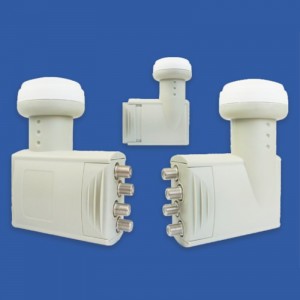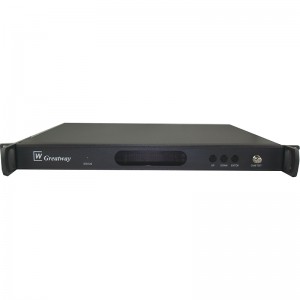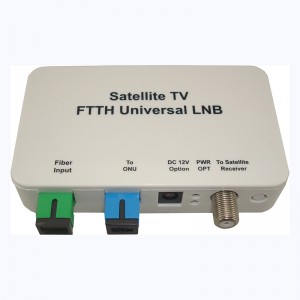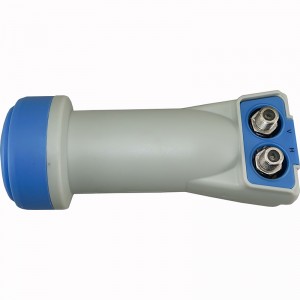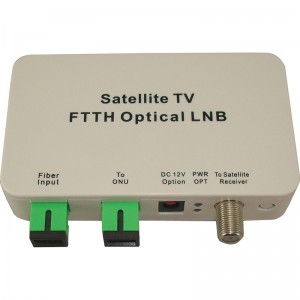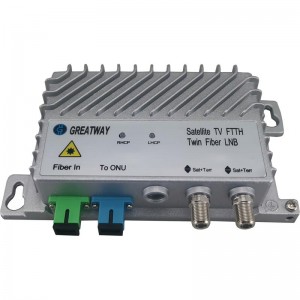G1 Universal LNB
Product Description
G1 series universal LNB has one or twin or Quattro output, each RF port has 950~2150MHz outputs with 13V or 18V reverse DC power from satellite receiver.
A low-noise block downconverter (LNB) is the receiving device mounted on satellite dishes, which collects the radio waves from the dish and converts them to a signal which is sent through a cable to the receiver inside the building. LNB is also called a low-noise block, low-noise converter (LNC), or even low-noise downconverter (LND).
The LNB is a combination of low-noise amplifier, frequency mixer, local oscillator and intermediate frequency (IF) amplifier. It serves as the RF front end of the satellite receiver, receiving the microwave signal from the satellite collected by the dish, amplifying it, and downconverting the block of frequencies to a lower block of intermediate frequencies (IF). This downconversion allows the signal to be carried to the indoor satellite TV receiver using relatively cheap coaxial cable; if the signal remained at its original microwave frequency it would require an expensive and impractical waveguide line.
The LNB is usually a small box suspended on one or more short booms, or feed arms, in front of the dish reflector, at its focus (although some dish designs have the LNB on or behind the reflector). The microwave signal from the dish is picked up by a feedhorn on the LNB and is fed to a section of waveguide. One or more metal pins, or probes, protrude into the waveguide at right angles to the axis and act as antennas, feeding the signal to a printed circuit board inside the LNB's shielded box for processing. The lower frequency IF output signal emerges from a socket on the box to which the coaxial cable connects.


